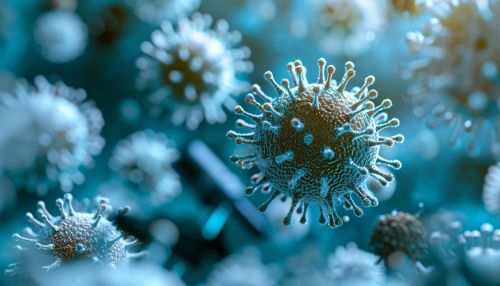Viruses
Introduction
Viruses are microorganisms that are smaller than bacteria, and they can infect all types of life forms, from animals and plants to microorganisms, including bacteria and archaea. They are considered by some to be a life form, because they carry genetic material, reproduce, and evolve through natural selection, although they lack key characteristics such as cell structure that are generally considered necessary to count as life. Because they possess some but not all such characteristics, viruses have been described as "organisms at the edge of life".


Structure
Viruses display a wide diversity of shapes and sizes, called morphologies. Viruses are about 1/100 the size of bacteria, and bacteria are larger than your cells. Most viruses cannot be seen with an optical microscope, so scanning and transmission electron microscopes are used to visualize them. A complete virus particle, known as a virion, consists of nucleic acid surrounded by a protective coat of protein called a capsid. These are formed from identical protein subunits called capsomeres.
Classification
Viruses can be classified in terms of the host that they infect: animal viruses, plant viruses, fungal viruses, and bacteriophages (viruses infecting bacteria, which include the most complex viruses). A special group of viruses (satellite viruses) infect other viruses. Further classification is based on the viral genome and the replication of the virus. Viruses can contain either DNA or RNA as their genetic material, and the DNA or RNA can be either single-stranded or double-stranded.
Replication
Viruses are obligate intracellular parasites, meaning they live and reproduce inside an organism's cells. They are thus much smaller than these cells; a typical virus measures 20-300 nanometers, while a typical bacterium is 1,000 nanometers (1 micrometer). The life cycle of viruses differs greatly between species but there are six basic stages in the life cycle of viruses: attachment, penetration, uncoating, replication, assembly, and release.
Viral Diseases
Viruses cause many human diseases. In addition to the common cold, viruses also cause deadly conditions like AIDS, smallpox, and Ebola. Viruses and their diseases also occur in other organisms. For example, the tobacco mosaic virus damages tobacco crops. Some viruses such as the human papillomavirus and the Epstein-Barr virus can lead to the development of cancer.
Prevention and Treatment
Viral diseases are difficult to treat because viruses live inside the body's cells where drugs cannot reach them. Antiviral drugs, immunization, and improved sanitation can help prevent viral diseases. Vaccines stimulate the immune system to destroy specific viruses and make the person immune to future infection.
